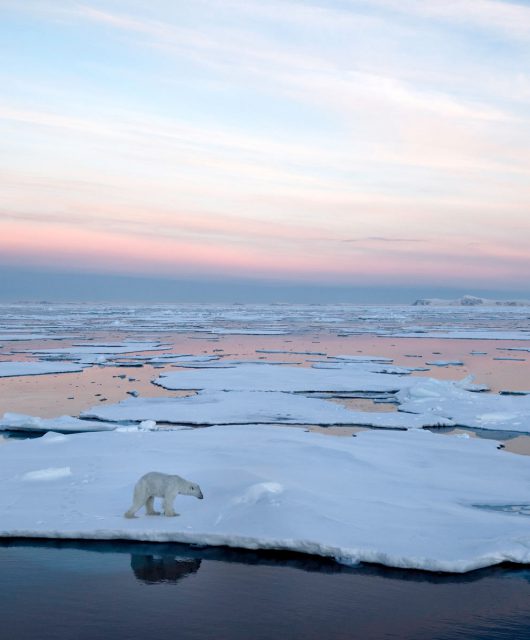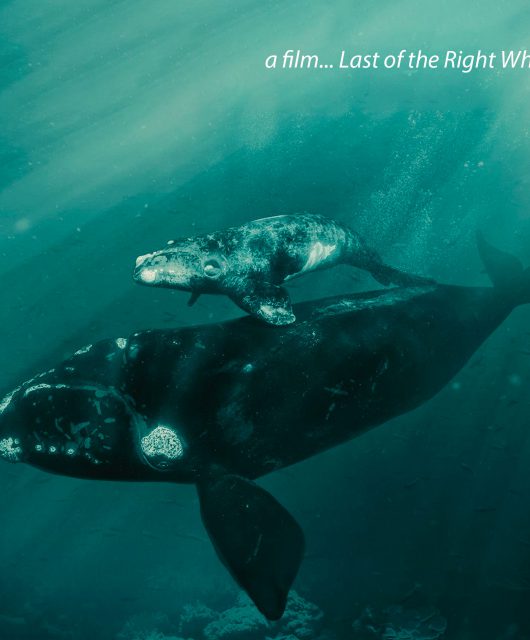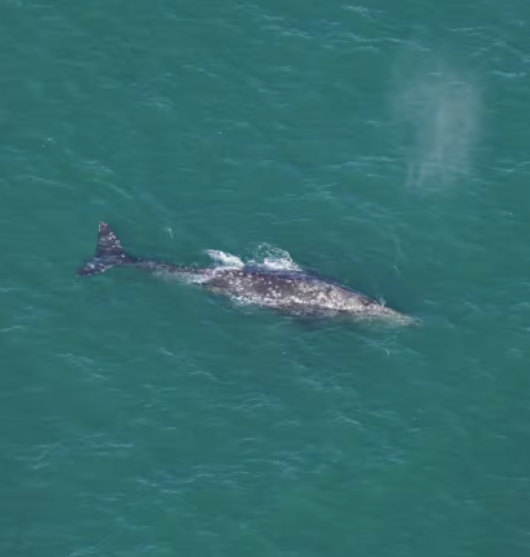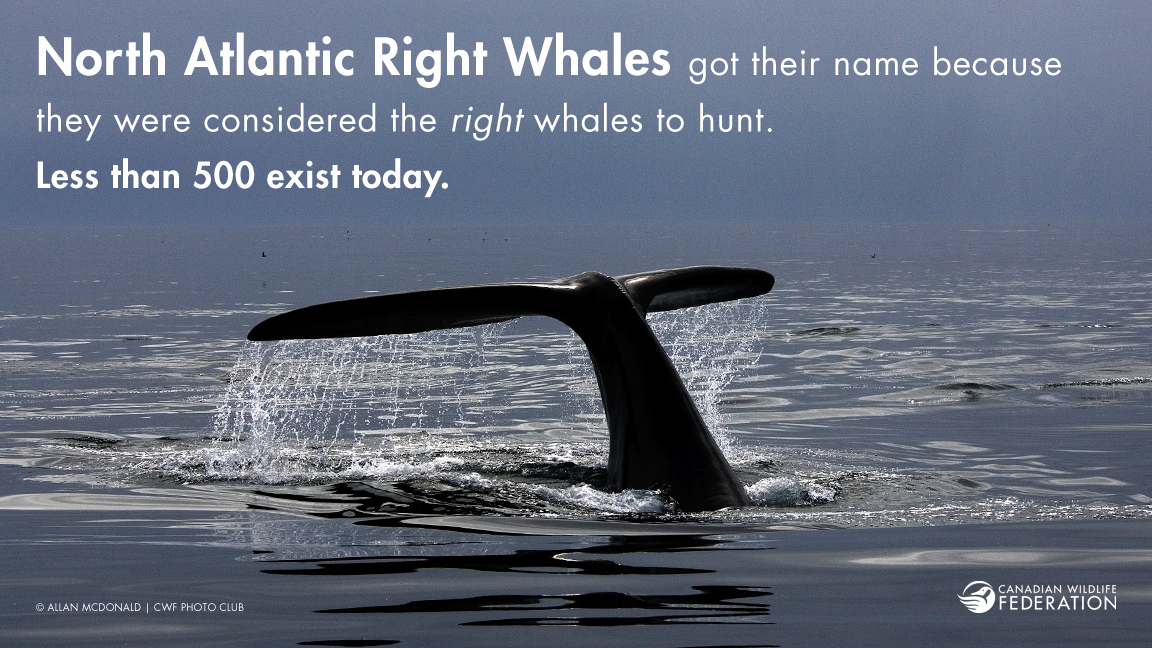
“There are more North Atlantic Right Whale researchers than there are Right Whales” is a phrase the Right Whale community uses to relate the plight of the Right Whale, and its status among conservationists. The endangered North Atlantic Right Whale has not been hunted since the 1920s, yet its population still hasn’t recovered, and hovers today around 500 individuals.
Although the hunt of Right Whales has ended, increasing industrial activity in the ocean has resulted in most Right Whales dying nowadays because of accidental ship strikes and entanglement in fishing gear.
Let’s press the rewind button and take a closer look at Right Whale conservation. Large aggregations of Right Whales were encountered by researchers in the Bay of Fundy in the 1970s and 80s, which increased awareness of these animals, and attracted people from all disciplines to study and help conserve them.
In the mid-2000s a large number of calves were born, and new conservation measures were put in place to protect Right Whales from ship strikes. These two situations were celebrated as the Right Whale population seemed to be increasing.
Then, in 2010, we lost them. Survey teams in the Gulf of Maine and the Bay of Fundy noticed a big drop in the numbers of Right Whale visiting these traditional feeding areas. This pattern has remained the same since then. The whales had clearly changed their distribution; but why, and where did they go?
Right Whales come to these northern coastal waters during the summer to feed, so they are assumed to go where there is food. For Right Whales, food is large, dense patches of copepods (zooplankton) that form in deep channels and basins that pockmark much of our continental shelf. Scientists hypothesize that the whales stopped using these areas because these large patches of copepods disappeared; something that is known to happen occasionally.
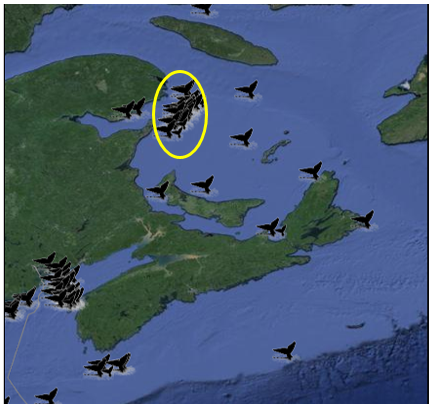
The ‘missing’ whales prompted more surveys in Canadian waters, and in 2015, aerial surveys, guided by oceanographic research that showed where copepods were likely to aggregate, found a new potential feeding area in Orpheline Channel with approximately 50 Right Whales (see yellow circle in photo)!
Early survey results for the summer of 2016 suggest that Right Whales have returned to their traditional feeding areas in the Bay of Fundy, but the ongoing surveys elsewhere in the Maritimes are showing us that the whales continued to use the Orpheline Channel. This is great news for Right Whale researchers, but it shows how much more we need to learn about these animals, and where they go in the ocean so that we can protect them better.
Sean Brillant, Senior Conservation Biologist, Canadian Wildlife Federation
Kim Davies, Liber Ero Postdoctoral Fellow, Department of Oceanography, Dalhousie University

